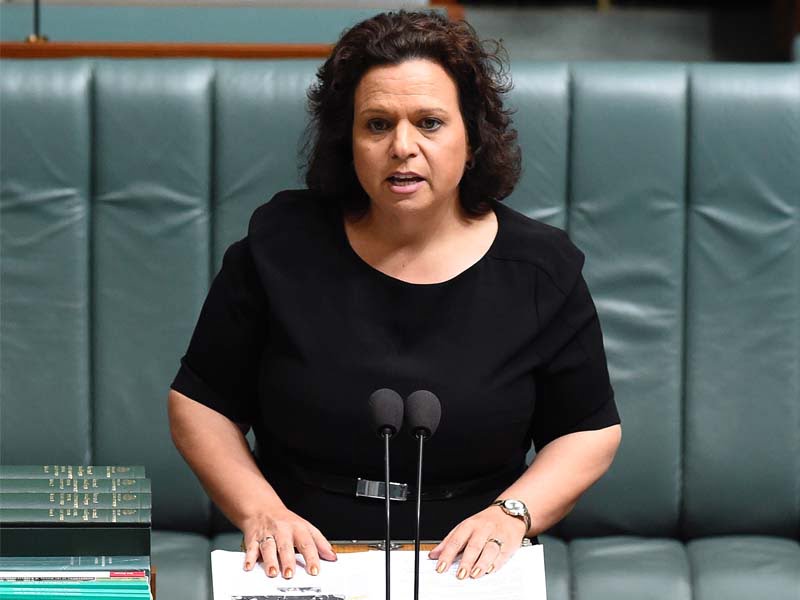A decade ago when John Howard was swept from office, he left Australia a broadband backwater. A broken regulatory structure and clear market failure demanded government intervention.
So Labor’s decision to deploy a ubiquitous National Broadband Network rightly took a long-term view of the needs of Australians as both consumers and taxpayers.
At the heart of this undertaking was the belief that if government was investing between $40 and $50 billion on an essential piece of national utility infrastructure, nothing less would suffice.

The Australian public backed this vision. They still do.
Labor’s fibre-based NBN was implemented through an integrated policy and pricing architecture designed around the technological and economic characteristics of fibre. This approach took a 40 year view and preserved the flexibility to respond to evolving demand.
This is why the $45 billion fibre NBN delivered a modest but workable 7.1 per cent rate of return.
Would the project have challenges? Sure, all significant and complex projects do. But it also meant Australians would enjoy a world-class fibre network capable of standing on its own feet and powering the digital economy for decades to come.
Enter Tony Abbott, Malcolm Turnbull and a purely political agenda to sabotage fibre at any cost.
Recall that NBN pricing is broadly set to recover the costs of building, maintaining and upgrading the network over its life.
If we take a 10, 20 or 30 year view of the Coalition’s multi-technology mix, it unequivocally fails the tests of engineering and economics.
Firstly, the network costs more to maintain, it delivers slower speeds, and will require expensive upgrades that could have been avoided. It is also more exposed to wireless competition, generates less revenue from those willing to pay and, as evidenced by the sorry state of the migration process, infuses an enormous amount of systems complexity into the NBN project
35 per cent of FTTN users are on a copper line that cannot deliver 50 Mbps. Further, for every 1 per cent of market share lost to 4G in the copper footprint, NBNCo surrenders over $700 million in revenue over a 30 year period.
Critically for the taxpayer, none of these costs or risks are reflected in the $49 billion price tag for the multi-technology mix. Nor are they properly reflected in the Turnbull Government’s 3.4 per cent rate of return.
Secondly, the NBN is currently operating on a two-tariff pricing architecture (AVC and CVC) which the ACCC approved for a $45 billion fibre network. The regulator approved this supply-side pricing framework on the basis that NBN would be responsible for managing its demand-side revenue risks. A fibre NBN was well-suited to this task because it preserved an indefinite performance and reliability edge.
However, the switch to a $49 billion multi-technology mix, systemic shortcomings in customer experience, and retail competition focused on securing market share at the lowest price have combined to sap consumer confidence and suppress the take-up of higher speeds.
Again this is apparent in the evidence. The wholesale market indicators recently published by the ACCC show that CVC now accounts for an estimated 37 per cent of total NBN revenues. Under an FTTP rollout, this was forecast to be 29 per cent over FY17.
This data shows the multi-technology-mix has become increasingly dependent on CVC for revenue, which has unhealthy consequences for both consumers and industry.
This crisis engulfing the NBN has prompted a wave of commentary about what comes next.
To be fair, NBNCo appears constrained by its political parameters, leaving it with one option: to grow revenue by persuading industry to charge more, and hence consumers to pay more.
As such, it was no accident that Mr Morrow adopted a new set of talking points when releasing the 2018 NBN Corporate Plan:
“We have done third-party studies that strongly suggest people are willing to pay more for better broadband — and that means faster, that means consuming more, that means lower latency on it,” the plan states.
“The study that we had, 40 percent of them said that they’d be willing to pay AU$12 more,” it said.
Expect to hear more of this from NBN over the coming six months.
Despite its best intentions, the ACCC is also unlikely to save the day.
The ACCC operates on the principle that NBNCo is entitled to earn a return on its investment, provided that investment is prudent. The prudence of Malcolm Turnbull spending $49 billion to upgrade Telstra’s ADSL and HFC network is enough to make a cat smile. If this is the starting point, it appears the primary tool the regulator can employ is to compare the speed promises of retailers and simultaneously threaten court action for under-performance, as a means of pressuring providers to buy more CVC from NBN.
It is clear much of the problem before us is structural – and all roads lead to Malcolm Turnbull.
Ultimately, his decision to abandon engineering and economics has saddled Australia with a network that not only costs more but does less.
In the meantime, Australia languishes in the global internet rankings, and our regional neighbours who embraced high-speed broadband through fibre are leaving us for dust.
Do you know more? Contact James Riley via Email.

